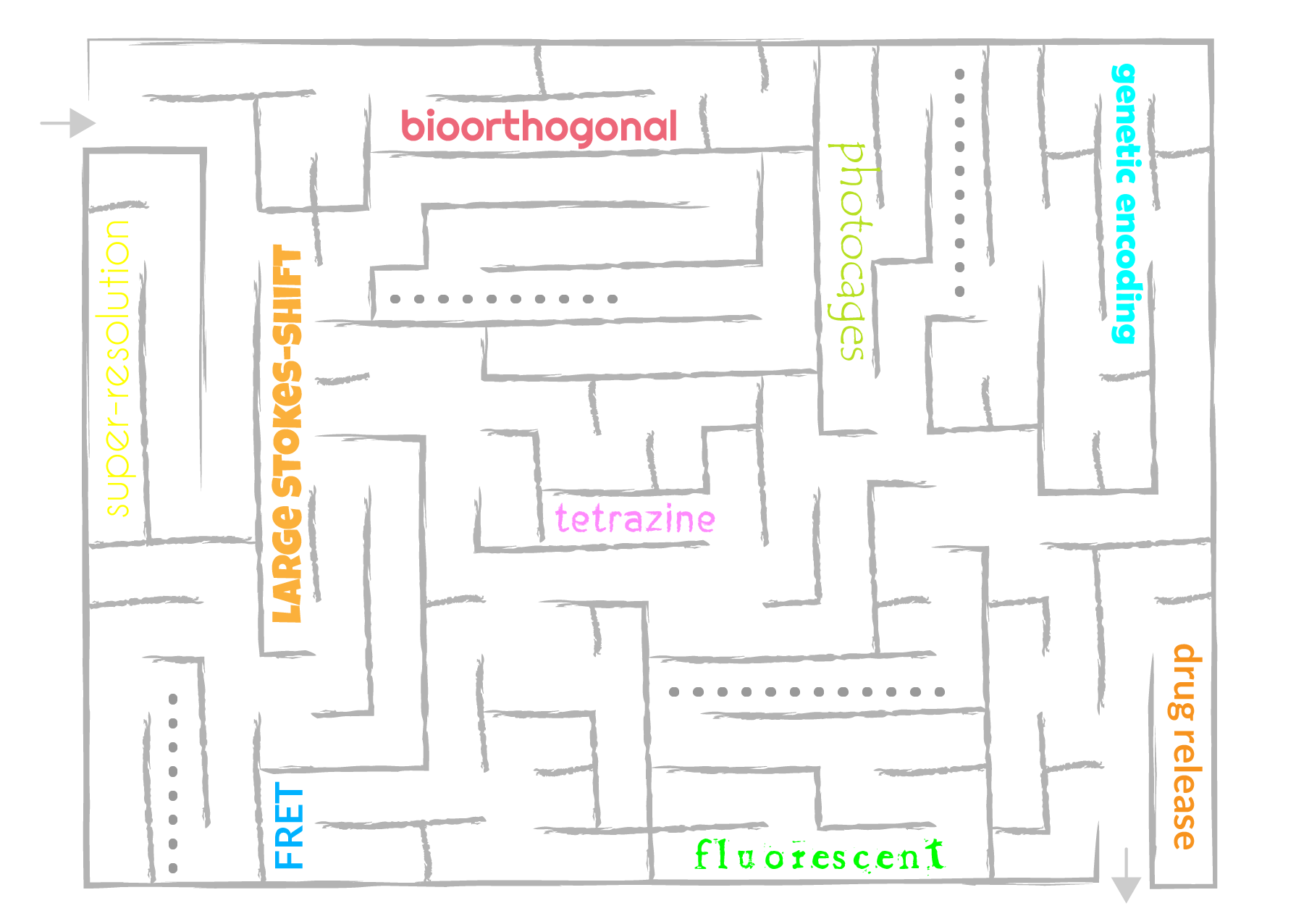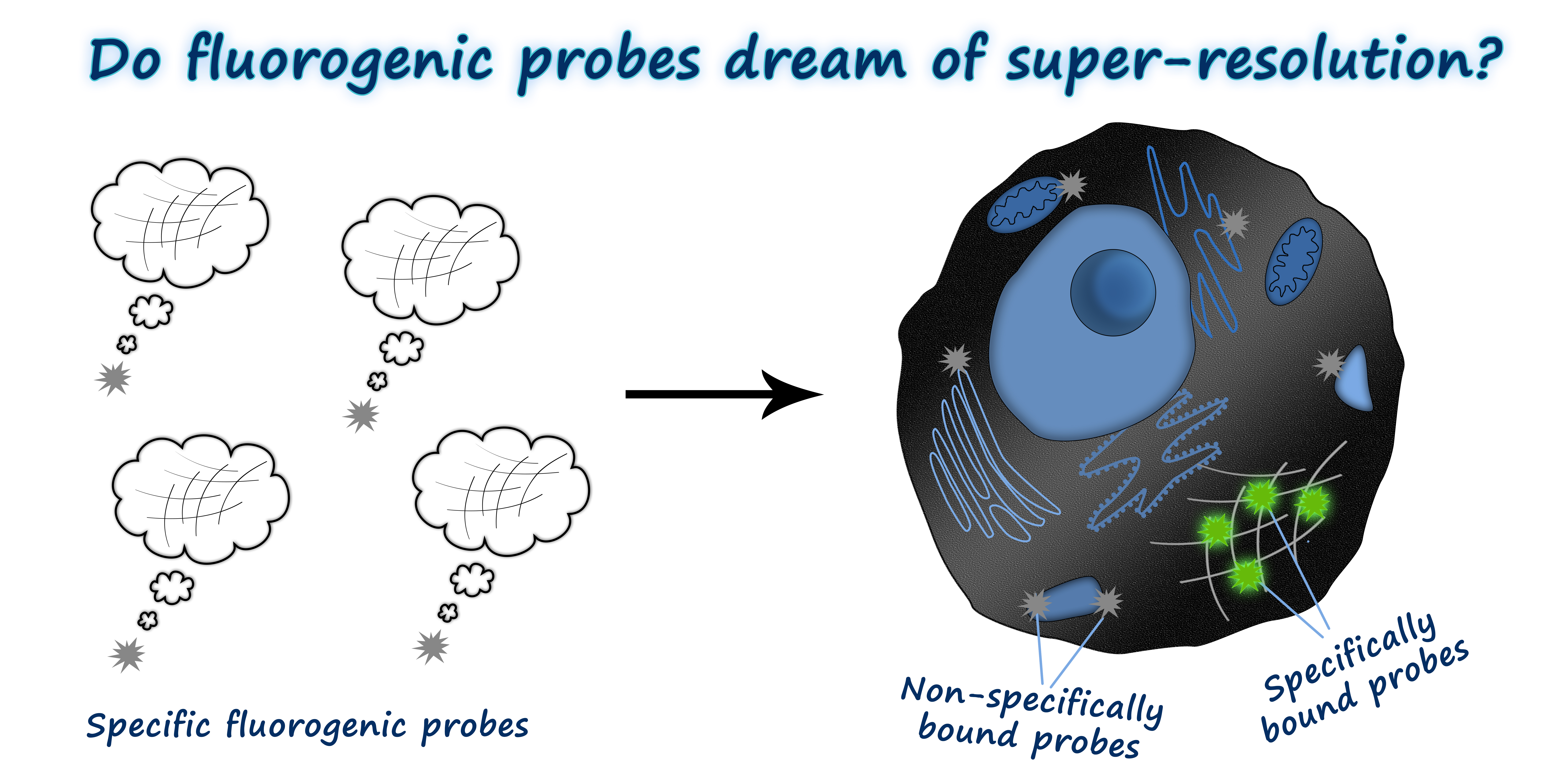Bioorthogonal fluorescent probes
Bioorthogonal reactions transformed our ability to observe and study biomolecules in their native environment and manipulate their activity in vivo. These biocompatible reactions enable highly selective covalent modification of the biomolecule of interest under physiological conditions. Our research topic focuses on the development of bioorthogonally applicable fluorescent dyes that offer improved imaging in terms of resolution by suppressing auto- and background fluorescence.




